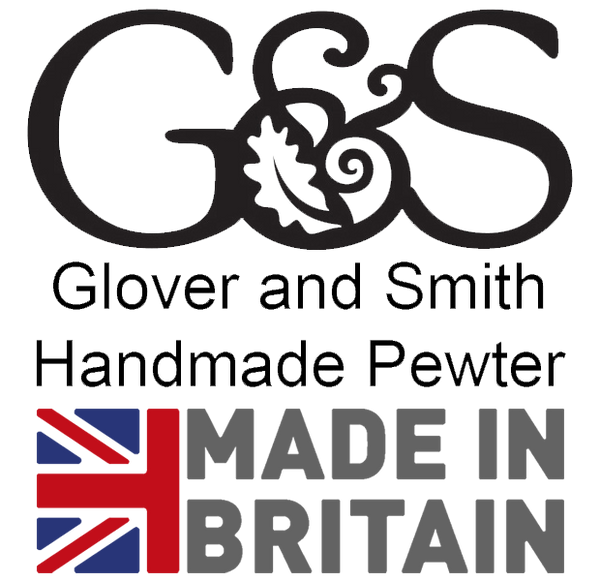Pewter Making At Glover And Smith Handmade English Pewter
Here are some images taken in our Wilton workshop, giving a little insight into what is involved in making Glover and Smith lead-free pewter tableware and jewellery.
Pewter casting.
The making of the originals and the mould making process Ed has developed is a bit of a top secret. These are processes and techniques developed over the last 30 years, so we're thinking carefully before we introduce details of this bit. All designs and moulds are made in the workshop by us!

Steve's casting today, (other days he's in the design office creating our great e-newsletters and graphics needs). He also makes the designs because it makes sure he knows what he's talking about. Steve selects the mould and chalks both sides of the mould. This absorbs gases produced in the mould when the metal enters.

The metal is molten at around 290 degrees C. The mould is spinning in side the box filling up with the help of centrifugal force. Some items we gravity cast.

Once the metal is solid we take the items out of the mould and clip them off the sprues. Here are heart boxes and gingko salad servers, ammonite boxes in background. All the sprues are melted down again in the pot & the metal used again.

Here are some British countryside animals on the bench before and after clipping.

Once the designs are cast then the hand finishing begins. In these pictures removing flash from an oak leaf salad server and finishing a jar spoon.

More hand finishing, this time a Ginkgo Leaf Salad Server.

Once the napkin rings castings are cleaned up and finished, we can hand bend them shape.

Or soldered on to Sterling silver wire or cuff link mechanisms. Our jewellery is all polished the hard way before further machine polishing.

Ed is soldering hounds onto bowls. Once all our designs have been filed, drilled, burnished, dremelled, soldered, filed again, hand polished, and usually more.
Hope you enjoyed the pictures.
